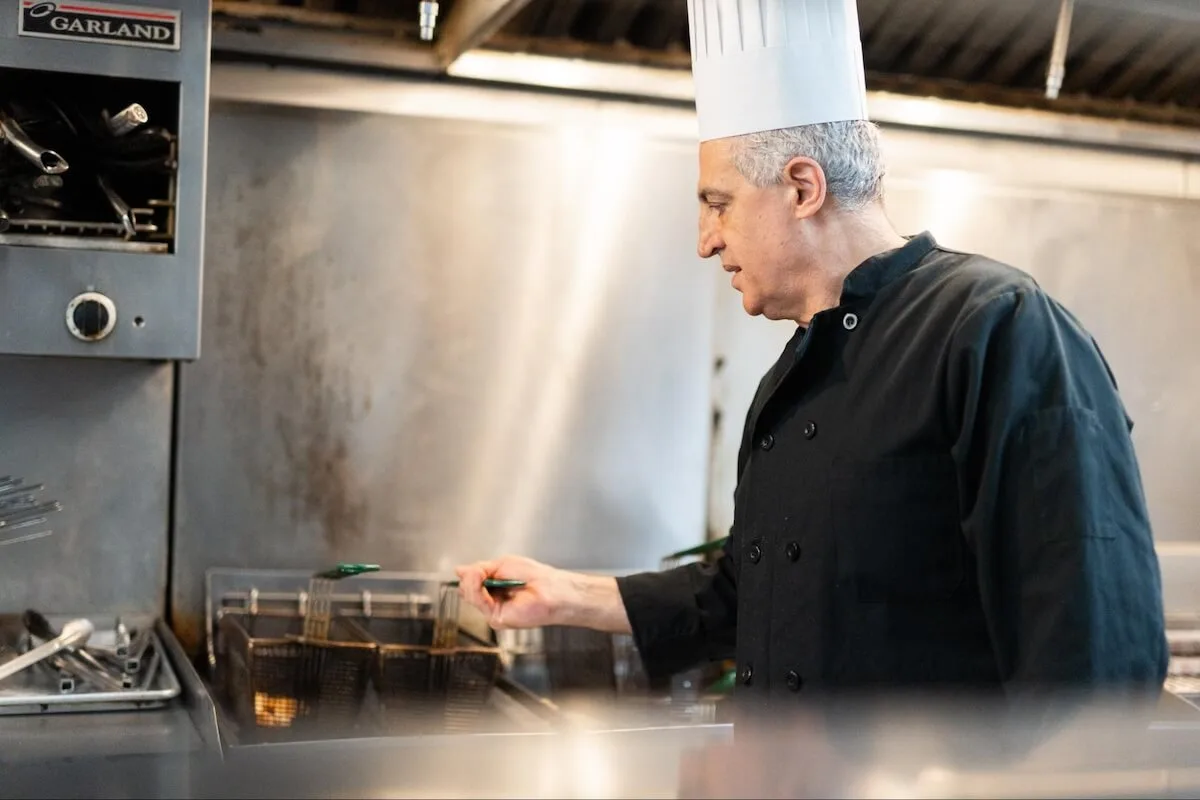The 11 restaurant industry benchmarks you need to know
Skip the article and turn takeaways into action by scheduling a call with our team.
Any business that intends to make a profit needs to have a way to measure that profit. Keeping track of financial data points in the restaurant business isn’t optional if you’re running anything larger than a lemonade stand. That’s where restaurant industry benchmarks come in: They’re the key performance indicators (KPIs) that help you keep track of just how your business is doing.
While a lot of these key metrics sound more complicated than they really are, knowing the industry standard terminology is still a core part of being a restaurant owner.
Here, we’ll go over some of the core restaurant industry standard benchmarks, why they matter, and how you can integrate them into your regular business practice. Successful restaurant owners pay close attention to these metrics as they demonstrate the health of a restaurant. Improving them leads to long-term growth.
A good way to view restaurant industry benchmarks is to break them down into three categories: front-of-house, back-of-house, and overall. Let’s start with some front-of-house metrics.
3 front-of-house restaurant industry benchmarks

Nailing your front-of-house industry benchmarks can help you determine how you’re doing on the customer-facing side of the business and can help you get creative should you find room for improvement. Generally, your front-of-house metrics give you insight into both customer and server behavior. Many modern POS systems or front-of-house software suites can give you an extraordinary leg up on your competition or even your previous software.
1. Revenue per seat
Revenue per seat gives you an idea of how much you can expect to make per seat in a given period of time. This is a flexible metric that can show you both overall expectations and expectations for a given seat, as some seats are more valuable than others.
For example, in my personal experience, six seats around the bar in a pub I owned accounted for north of 40% of total sales even though they were only 20% of the seats. Some seats are more valuable than others. Check your metrics carefully over different time periods, like a day, week, or month, to see variabilities in which seats are most valuable.
2. Table turnover rate
Your table turnover rate shows you how long you can expect customers to stick around, i.e., table occupancy time. This will vary from restaurant to restaurant. Full-service restaurants, for example, can expect a lower table turnover rate than limited-service restaurants but can also expect higher overall sales per visit.
Slow table turnover isn’t necessarily a bad thing—making high customer retention a priority, especially if your operation has significant liquor or wine sales, can boost sales even with a slow turnover rate.
One interesting thing to keep in mind is that table turnover rate has dropped considerably over the last decade, largely driven by smartphones. Customers spend more time at tables simply because they’re dawdling on their phones. How you handle that is up to you: Some restaurateurs detest the idea of phone use during dinner; others couldn’t care less.
3. Footfall
Your footfall measures how many customers you can expect to see during a period of time. This can be especially useful for determining your staffing needs, helping you manage both customer satisfaction and labor costs. If your footfall is higher on a Saturday than on a Monday, you can plan ahead and arrange your staff schedule around the expectation.
3 back-of-house restaurant industry benchmarks

While your front-of-house metrics cover your customer and server behavior, your back-of-house metrics measure the effectiveness of your kitchen and its effects on your bottom line.
1. Food cost percentage
Your food cost percentage shows the price of the ingredients of any dish or your dishes overall before the value added by cooking and serving them. The traditional method for food cost percentage puts food cost at around one-third of the final menu price, but there is plenty of room for flexibility.
We’ve covered this topic in greater detail in this guide to food cost percentage. Check it out for a deep dive into strategies and more, including formulas to determine your cost of goods sold (COGS).
Keeping your food cost percentage down leads to higher net profit, and solid practices like using seasonal food, shopping around at different suppliers for the best prices, and buying in bulk can all save money without compromising quality.
2. Menu item profitability
Not every item on a menu has the same profitability ratio, and indeed, many factors go into determining profitability beyond simple food cost percentage and markup. Examples of these factors include the amount of labor that goes into a dish, how quickly it can be served and eaten, and more.
Working on menu engineering and really examining the nuts and bolts of each specific dish can help you determine exactly how profitable each item is. It’ll also give you an idea of what to improve or cut from your menu, as well as ways to encourage customers to purchase profitable items. Driving sales of profitable items is a surefire way to increase total revenue.
3. Inventory turnover ratio
In a nutshell, your inventory turnover ratio will show you whether you’re overstocking or understocking. As the name suggests, this metric indicates the rate at which you need to replace your inventory.
Rather than evaluating this over a short time period, aim for a month or more to get a more accurate view of your inventory needs. You can determine this ratio by dividing the average inventory dollar value by the cost of goods sold over a period of time, like a month or quarter.
Restaurant inventory management is one of the most important aspects of maintaining a successful restaurant, so check out some inventory management tips to level up your game. Cutting-edge inventory management tools can provide real-time data, showing you exactly when you need to order more stock.
5 overall metrics restaurant operators should know

Whether you’re running a new restaurant or an established one, and whether you’re an old hand in the game or you’re green, you’ll need to be aware of these metrics to determine appropriate targets and find ways to improve your restaurant performance.
1. Prime cost
Prime cost is a crucial metric that shows you the combined cost of your labor and your COGS. In addition to labor cost in wages, add all other aspects of your labor costs, including management salaries and employee benefits like insurance. Combining your overall labor cost with your COGS will give you the prime cost.
A solid rule of thumb is to try to keep your prime cost at less than 60% of total sales. Calculate this over a short period of time and over annual sales as well to get a holistic view of your performance.
2. Sales per square foot
One of the most valuable metrics, sales per square foot, helps you get an idea of just how profitable your restaurant is likely to be. While real estate prices like rent can certainly have an impact, some solid restaurant benchmarks can be valuable to see if you need to reevaluate. A restaurant that’s making upwards of $250 per square foot is likely to be profitable; one below $150 per square foot is unlikely to survive for long, regardless of location.
This calculation is best done on a yearly basis. To get your magic number, simply take your annual sales and divide it by the square footage of your restaurant.
3. Labor cost percentage
Keeping a lid on your labor costs is a tricky balancing act. On the one hand, being understaffed is a recipe for disaster, while on the other hand, being overstaffed will bleed a restaurant’s funds. Typically, restaurants should aim to keep their labor cost percentage at around 25-35% of their total sales, with 30% being a good rule of thumb. Different types of restaurants have different labor cost needs. For example, fine-dining restaurants typically spend more on labor costs than fast food franchises or quick-service restaurants, as the number of employees in the FOH is higher to ensure top-notch customer service.
4. Staff turnover rate
In the restaurant industry, staff members often leave their jobs. This is normal but can be frustrating, as new FOH staff have to be hired and trained. The restaurant industry is notorious for high turnover rates, so keeping yours as low as possible will save you time and money in the long run. Check out our article on ways to handle employee turnover for some strategies.
Replacing employees costs small companies (like restaurants) an average of $1,420 per employee for training alone. So, while restaurant industry turnover rates are exceptionally high, often well north of 50% and even higher, keeping your employee turnover rate down saves money while ensuring you retain top talent.
Staff turnover is a human problem that requires human solutions. Listening to and respecting employee opinions goes a long way toward fostering a wholesome work environment, as does offering a path to growth via increased skills, responsibilities, and pay.
5. Customer reviews
Hearing the truth about your restaurant directly from customers is one of the best and most straightforward ways to get feedback. So, keeping track of reviews across multiple platforms, including Yelp, Google, and social media, will give you an idea of what people really think of your establishment. Pay attention to not just official reviews but also check the web and social media for mentions of your restaurant to see what people are saying.
While it’s always nice to bask in the glow of good reviews, paying attention to (legitimate) negative reviews allows you to look in the mirror and see what needs improving. This outside perspective is crucial, seeing things you might have missed due to myopia or simple oversight. Responding kindly to reviews, both positive and negative, makes customers feel heard and improves a restaurant’s social standing.
Boost profits with Yelp
We’ve written about guidelines to boost your restaurant’s profit margin and will continue to do so. Being intimately familiar with restaurant metrics is one of the behind-the-scenes aspects of restaurant management that customers don’t see, but it is absolutely crucial to succeeding in this challenging industry.
One excellent way to get a solid grasp of these metrics is to rely on software that has your back. That’s where Yelp Guest Manager, the full FOH software suite, comes in. It integrates with numerous point of sale systems and inventory management tools to help provide a restaurant owner with all sorts of data, leading to intelligent choices. Established restaurants and startups alike can benefit from this information—like a customer’s favorite menu item or birthday—and front-of-house staff can, too.
Want to know more? Reach out to us for a free demo, and we’ll take you for a test drive.